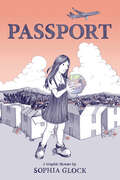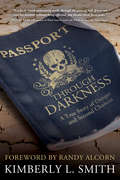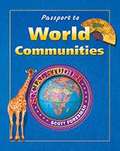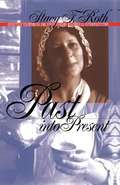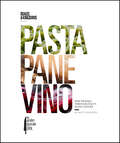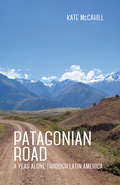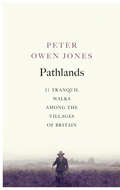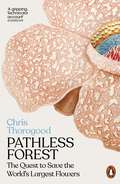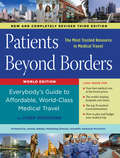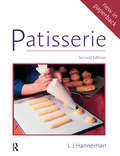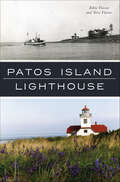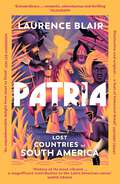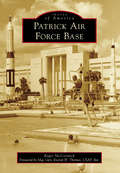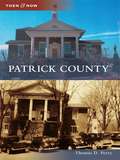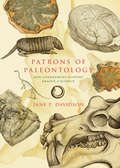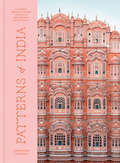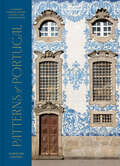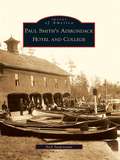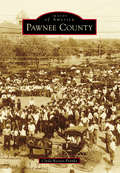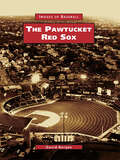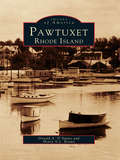- Table View
- List View
Passionate Nomad: The Life of Freya Stark
by Jane Fletcher GeniesseFreya Stark--traveler, explorer, Arabist, and woman of letters--began the extraordinary adventures that would glamorize her--and would catapult her into public life for the next sixty years--in 1927. And with the publication of The Valley of the Assassins in 1934, her legend was launched. Leaving behind a miserable family life, Freya set out, at the age of thirty-four, to explore remote and dangerous regions of the Middle East. She was captured in 1927 by the French military police after penetrating their cordon around the rebellious Druze. She explored the mountainous territory of the mysterious Assassins of Persia, became the first woman to explore Luristan in western Iran, and followed ancient frankincense routes to locate a lost city. Admired by British officialdom, her knowledge of Middle Eastern languages and culture aided the military and diplomatic corps, for whom she conceived an effective propaganda network during WWII. But Stark's indomitable spirit was forged by contradictions, her high-profile wanderings often masking deep insecurities. A child of privilege, she grew up in near poverty; she longed for love, but consistently focused on the wrong men. This is a brilliant and balanced biography--filled with sheikhs, diplomats, nomad warriors and chieftains, generals, would be lovers, and luminaries. Author Jane Geniesse digs beneath the mythology to uncover a complex, quixotic, and controversial woman.
Passport
by Sophia GlockAn unforgettable graphic memoir by debut talent Sophia Glock reveals her discovery as a teenager that her parents are agents working for the CIA. Young Sophia has lived in so many different countries, she can barely keep count. Stationed now with her family in Central America because of her parents' work, Sophia feels displaced as an American living abroad, when she has hardly spent any of her life in America.Everything changes when she reads a letter she was never meant to see and uncovers her parents' secret. They are not who they say they are. They are working for the CIA. As Sophia tries to make sense of this news, and the web of lies surrounding her, she begins to question everything. The impact that this has on Sophia's emerging sense of self and understanding of the world makes for a page-turning exploration of lies and double lives.In the hands of this extraordinary graphic storyteller, this astonishing true story bursts to life.
Passport through Darkness
by Kimberly L. SmithAs she shares her extraordinary stories of fighting human trafficking as an ordinary mom, Kimberly Smith offers hope for readers who wonder if God is calling them to greater things. Passport Through Darkness takes readers on Smith's journey from normal family life and business, to Europe, to the deserts of Africa and ultimately, to the deserts of her own soul as she tries to live well as an imperfect American mom, crusade for justice for orphans around the world, and embrace God's extraordinary dreams for her. When Kimberly and her husband risk everything to answer God's call, they see God change and restore them--even amid exhaustion, marital struggles, and physical limitations. This heartbreaking, heartlifting book is for anyone who longs to see God move their life from normal to one that matters. It is a call to readers to take one more step on their journey to know God's heart.
Passport to World Communities
by Scott ForesmanA social studies text for students exploring the different cultures around the world.
Past into Present: Effective Techniques for First-Person Historical Interpretation
by Stacy F. RothThe portrayal of historical characters through interactive dramatization or role-playing is an effective, albeit controversial, method used to bring history to life at museums, historic sites, and other public venues. Stacy Roth examines the techniques of first-person interpretation to identify those that have been most effective with audiences while allowing interpreters to maintain historical fidelity.
Pasta, Pane, Vino: Deep Travels Through Italy's Food Culture (Roads And Kingdoms Presents Ser.)
by Matt Goulding“Italy is a beautiful but complicated place, not so much a country as a collection of cultures and cuisines. Matt Goulding expertly navigates it’s wonders and eccentricities with wisdom and great passion.” -Anthony Bourdain "Goulding is pioneering a new type of writing about food." -Financial Times This is not a cookbook. This is something more: a travelogue, a patient investigation of Italy’s cuisine, a loving profile of the everyday heroes who bring Italy to the table. Pasta, Pane, Vino is the latest edition of the genre-bending Roads & Kingdoms style pioneered under Anthony Bourdain’s imprint in Rice, Noodle, Fish ( 2016 Travel Book of the Year, Society of American Travel Writers ) and Grape, Olive, Pig ( 2017 IACP Award, Literary Food Writing). Town by town, bite by bite, author Matt Goulding brings Italy to life through intimate portraits of its food culture and the people pushing it in new directions: Three globe-trotting brothers who became the mozzarella kings of Puglia; the pizza police of Naples and the innovative pies that stay one step ahead of the rules; the Barolo Boys who turned the hilly Piedmont into one of the world’s great wine regions.Goulding’s writing has never been better, in complete harmony with the book's innovative design and the more than 200 lush color photographs that introduce the chefs, shepherds, fisherman, farmers, grandmas, and guardians who power this country’s extraordinary culinary traditions. From the pasta temples of Rome to the multicultural markets of Sicily to the family-run, fish-driven trattorias of Lake Como, Pasta, Pane, Vino captures the breathtaking diversity of Italian regional food culture.
Patagonian Road: A Year Alone Through Latin America
by Kate MccahillSpanning four seasons, 10 countries, three teaching jobs, and countless buses, Patagonian Road chronicles Kate McCahill's solo journey from Guatemala to Argentina. In her struggles with language, romance, culture, service, and homesickness, she personifies a growing culture of women for whom travel is not a path to love but to meaningful work, rare inspiration, and profound self-discovery. Following Paul Theroux's route from his 1979 travelogue, McCahill transports the reader from a classroom in a Quito barrio to a dingy room in an El Salvadorian brothel, and from the neighborhoods of Buenos Aires to the heights of the Peruvian Andes. A testament to courage, solitude, and the rewards of taking risks, Patagonian Road proves that discovery, clarity, and simplicity remain possible in the 21st century, and that travel holds an enduring capacity to transform.
Pathfinders: A Global History of Exploration
by Felipe Fernández-Armesto"A brilliant and readable book…a rich study of humankind's restless spirit." —Candice Millard, New York Times Book Review Greeted with coast-to-coast acclaim on publication, Fernández-Armesto's ambitious history of world exploration sets a new standard. Presenting the subject for the first time on a truly global scale, Fernández-Armesto tracks the pathfinders who, over the past five millennia, lay down the routes of contact that have drawn together the farthest reaches of the world. The Wall Street Journal calls it "impressive...a huge story [told] with gusto and panache." To the Washington Post, "Pathfinders is propelled by an Argonaut of an author, indefatigable and daring. It's a wild ride." And in a front-page review, the Seattle Times hails its "tart and elegant presentation...full of surprises. Fernández-Armesto's lively mind, pithy phrasing, and stunningly thorough and diverse knowledge are a constant pleasure." A plenitude of illustrations and maps in color and black and white augment this rich history. In Pathfinders, winner of the 2007 World History Association Book Prize, we have a definitive treatment of a grand subject.
Pathlands: 21 Tranquil Walks Among the Villages of Britain
by Peter Owen Jones'When we walk, we walk through two landscapes: an exterior land of trees, seas, cities, mountains and fields but we also follow the paths that lead into our own interior world.'This thoughtful, and beautifully written, book offers 21 circular walks. They span the length and breadth of the British Isles: Suffolk, Northamptonshire, Wiltshire, Wales, Staffordshire, Scotland, Sussex and Cornwall are just a few of the varied landscapes that they cover.As one of the prime 'walks correspondents' of The Sunday Times, Peter Owen Jones already has a loyal following. This book will only increase his audience, and will be both for those who love walking in the countryside and those who enjoy reading, and musing on it, in their armchair at home.
Pathless Forest: The Quest to Save the World’s Largest Flowers
by Dr Chris ThorogoodThe incredible story of one man's obsession to find and protect the world's largest flowers As a child, Chris Thorogood dreamed of seeing Rafflesia - the plant with the world's largest flowers. He crafted life-size replicas in an abandoned cemetery, carefully bringing them to life with paper and paint. Today he is a botanist at the University of Oxford's Botanic Garden and has dedicated his life to studying the biology of such extraordinary plants, working alongside botanists and foresters in Southeast Asia to document these huge, mysterious blooms.Pathless Forest is the story of his journey to study and protect this remarkable plant - a biological enigma, still little understood, which invades vines as a leafless parasite and steals its food from them. We join him on a mind-bending adventure, as he faces a seemingly impenetrable barrier of weird, wonderful and sometimes fearsome flora; finds himself smacking off leeches, hanging off vines, wading through rivers; and following indigenous tribes into remote, untrodden rainforests in search of Rafflesia's ghostly, foul-smelling blooms, more than a metre across.We depend on plants for our very existence, but two in five of the world's species are threatened with extinction - nobody knows how many species of Rafflesia might already have disappeared through deforestation. Pathless Forest is part thrilling adventure story and part an inspirational call to action to safeguard a fast-disappearing wilderness. To view plants in a different way, as vital for our own future as for that of the planet we share. And to see if Rafflesia itself can be saved.
Patients Beyond Borders
by Josef Woodman Jeremy AbbateMore than ten million patients now travel abroad every year for affordable, high-quality healthcare. From Thailand's American-accredited Bumrungrad International Hospital to Eric Clapton's Crossroads Center in Antigua to Johns Hopkins International Medical Center in Singapore, health travelers now have access to a full array of the world's safest, best choices in healthcare facilities and physicians.Now in its Third Edition, Patients Beyond Borders remains the best-read, most comprehensive, easy-to-understand guide to medical tourism, written by the world's leading spokesperson on international health travel. Patients Beyond Borders Third Edition lists the 25 top medical travel destinations, where patients can choose from hundreds of hospitals and save 30-80% on medical procedures, ranging from a comprehensive health check-up to heart work, orthopedics, dental and cosmetic surgery, in vitro fertilization and more.
Patisserie
by Leonard J HannemanThis classic book, widely known and used by patissiers is a professional text on the art of patisserie. In the twenty years that Patisserie has been published there have been great changes in almost every aspect of this art, and the author has thoroughly updated this new edition to take account of these.Updated in paperback format the revised edition of this classic text is now even more affordable, practical and enjoyable. Complete with the original, beautiful seventy-three colour photographs, each shows clearly how the finished product should be presented, and a wide range of diagrams demonstrate the more complex processes.New dishes have been added, for example, pavlova, sticky toffee pudding, blinis, pasta dough, frangipan apple, cheesecake, and sugar balls, while some of the existing ones have been amended or replaced. Additional information on fruits, and on using eggs or egg substitutes in patisserie have been included. Of special interest are the chapters on equipment, commodities, and hygiene, which include the provisions of the Food Hygiene (Amended) Regulations 1990, as far as they affect the patisserie section of the catering industry.
Patos Island Lighthouse (Landmarks)
by Edrie VinsonSince 1893, a light has been shining from Patos Island, the northernmost island in Puget Sound. Built to guide ships through treacherous waters, the lighthouse was also a happy home for many, including Edward Durgan and his family in the early 1900s. Boundary waters smugglers and rumrunners once visited the island to stash their contraband, and it was a front-line guard for the nation during World War II. Manned for eighty-one years by the U.S. government, the light was automated in 1974 and is now maintained by the Coast Guard. Join authors Edrie Vinson and Terri Vinson, members of the Keepers of the Patos Light, as they explore the history of this unique Washington landmark.
Patria: Lost Countries of South America
by Laurence BlairA spellbinding history of South America, as heard on hit podcast The Rest Is History'Absolutely wonderful' DOMINIC SANDBROOK'A luscious, erudite romp ... a tour de force of literary mezcla' ALICE ALBINIA'An unputdownable delight' JON LEE ANDERSON'A magnificent contribution to the Latin American canon' MARIE ARANAIn this sweeping exploration of the continent's forgotten past, Laurence Blair takes as his waymarks nine countries that can’t be found on a map: vanished realms, half-imagined utopias and dismembered homelands. Looking beyond modern borders, he travels to each in turn – on foot and horseback, by rail and river – to weave an epic of survival, resistance and revolution.Blair’s journey spans five centuries and thousands of miles, ranging from ancient Amazonian civilisations and a rebel Inca dynasty in the Peruvian jungle – via a Brazilian Wakanda that defied slavery, Bolivia’s landlocked navy and the Patagonian power that defeated the Spanish Empire – to the African freedom fighters who marched over the Andes from Argentina, and the Napoleon of the New World who led Paraguay to its ruin.This is the story of South America as is rarely told: at the epicentre of global history and the forging of the modern world.
Patricia Unterman's San Francisco Food Lover's Pocket Guide: Includes the East Bay, Marin, Wine Country
by Patricia Unterman Ed AndersonPATRICIA UNTERMAN'S SAN FRANCISCO FOOD LOVER'S POCKET GUIDE offers an intrepid, unapologetically discriminating, and refreshingly down-to-earth selection of the best and most interesting eateries, markets, and other food- and drink-related spots in San Francisco, the East Bay, Marin, and the wine country. Now in a compact format, this book is a hip-pocket must for locals and tourists alike, covering everything from sophisticated California cuisine to authentic Mission taquerias. The bible of food guides for the West Coast food mecca, with more than 600 listings, updated and condensed for the first time into a handy hip-pocket size. As a restaurateur, journalist, and food critic for more than 30 years, Unterman is the Bay Area's most respected authority on food. Previous editions have sold more than 75,000 copies."Indespensable for an informed culinary wandering."-Town & Country"Forget Zagat. If you want to know where to eat, drink, and buy food and wine in the Bay Area, let Patricia Unterman show you the way. ... A must have for food-and-wine hounds heading to the Bay Area." -Food & Wine"Patricia Unterman's San Francisco Food Lover's Pocket Guide promises to help the palate-driven to only the top foodie spots in town." -New York Daily News"Patty knows her Asian food: Eat whatever she says." -7x7 Magazine"Stash this slim volume in your glove compartment and you will never be at a loss for dining options ever again. While this book is not just for tourists, I couldn't help but pass my copy off to a visiting hungry eater/blogger who already used it to find the burrito of his dreams." -Amy Sherman, blogger, Cooking With AmyFrom the Trade Paperback edition.
Patrick Air Force Base (Images of America)
by Major General Thomas USAF Ret. Roger MccormickThe search began in 1946 for a location to conduct long-range missile tests. Cape Canaveral was chosen in part due to a nearby deactivated military base that could support a long-range proving ground for test firing missiles. The base, originally known as Banana River Naval Air Station, was eventually renamed Patrick Air Force Base in honor of a distinguished Army general. Today, Patrick is part of Air Force Space Command, and it is operated by the 45th Space Wing that also oversees launch facilities at nearby Cape Canaveral Air Force Station with the vision of "World's Premier Gateway to Space."
Patrick County
by Thomas D. PerryFormed in 1790, Patrick County is named for the Commonwealth of Virginia's first governor, Patrick Henry, who lived in neighboring Henry County. Located along the border of North Carolina where the Blue Ridge Mountains of the Appalachian Range cross the state line, the "Free State of Patrick" is half piedmont and half mountain plateau. This dividing geographic feature is reflected in the mountain people of Scots-Irish and German descent along with English living below the mountain heights. This divergent population produced tobacco magnate R. J. Reynolds; Civil War general J. E. B. Stuart; Virginia governor Gerald Baliles; Virginia's highest-elected female, former attorney general Mary Sue Terry; and World Series pitcher Brad Clontz.
Patrons of Paleontology: How Government Support Shaped a Science
by Jane P. DavidsonIn the 19th and early 20th centuries, North American and European governments generously funded the discoveries of such famous paleontologists and geologists as Henry de la Beche, William Buckland, Richard Owen, Thomas Hawkins, Edward Drinker Cope, O. C. Marsh, and Charles W. Gilmore. In Patrons of Paleontology, Jane Davidson explores the motivation behind this rush to fund exploration, arguing that eagerness to discover strategic resources like coal deposits was further fueled by patrons who had a genuine passion for paleontology and the fascinating creatures that were being unearthed. These early decades of government support shaped the way the discipline grew, creating practices and enabling discoveries that continue to affect paleontology today.
Patterns of India: A Journey Through Colors, Textiles, and the Vibrancy of Rajasthan
by Christine ChitnisIt's the trip of a lifetime--a textile-based tour of colorful Rajasthan, India featuring more than 200 lush photographs depicting everyday life in one of the most vibrant regions in the world.Patterns of India is a visual experience that offers intimate insights into the diverse and richly hued Western Indian culture. Color is the thread that binds the vast country together, defining every aspect of life from religion and politics to food and dress. Organized by the five dominant colors royal blue, sandstone, marigold, ivory, and rose, this book explores how deeply color and pattern exist in a symbiotic relationship and are woven into every part of the culture. For instance, the fuchsia found in the draping fabric of a sari is matched by the vibrant chains of roses offered at temple, and the burnt orange spices in the marketplaces are reflected in the henna tattoos given to brides and wedding guests. While every color is imbued with meaning, it is often within the details of patterns that the full story comes to light. Photographer and writer Christine Chitnis spent over a decade traveling through, getting to know, and falling in love with the intricate patterns of everyday Rajasthani life. With history and culture-based essays woven throughout the more than 200 stunning photographs of architecture, markets, cuisine, art, textiles, and everyday goings-on, Patterns of India captures the beauty and essence of this unique part of the world.
Patterns of Portugal: A Journey Through Colors, History, Tiles, and Architecture
by Christine ChitnisA vibrant tour of Portugal, featuring more than 200 photographs that bring to life one of the most beautiful countries in the world.In this gorgeous book, writer and photographer Christine Chitnis invites you to celebrate the unique, timeless beauty of Portugal through the stunning designs and hues that define Portugal&’s countryside, coast, small towns, and cosmopolitan cities.This collection features over 200 stunning photographs that illustrate the ways that color and pattern are woven into the very fabric of the country&’s culture, history, architecture, and traditions. Each section features insightful essays that explore the artistry of azulejos, the colorful ceramic tiles covering much of Portugal's architecture; the intricately embroidered details of traditional lavradeira costumes; the rich flavors of Portuguese cuisine, and so much more.Throughout these vibrant pages, you&’ll discover the vivid stories behind each color and pattern, transporting you to the gorgeous fields of Alentejo, the sparkling waters of the Algarve, the busy streets of Lisbon, the lush valleys of the Douro, and beyond.
Paul Smith's Adirondack Hotel and College (Images of America)
by Neil SurprenantFrom 1859 to the present, the name Paul Smiths has meant different things to visitors and residents of the Adirondack Mountains of northern New York. In the 19th century, the name was synonymous with a grand hotel on the shores of Lower St. Regis Lake and the wilderness guide who was its founder. In the early 20th century, the hotel business expanded to include land sales, a railroad, a telephone company, and the Paul Smith's Electric Power and Light Company, which became the first electric provider in the region. After World War II, Paul Smith's College was founded to provide quality liberal arts and technical associate-level degrees to returning veterans and recent high school graduates. Today Paul Smith's College attracts students from across America to the only baccalaureate-degree-granting institution in the six-million-acre Adirondack Park.
Pawleys Island: A Century Of History And Photographs (Images of America)
by Steve Roberts Lee BrockingtonThe history of Pawleys Island can be summed up in four words: rice, sea, golf, and hammocks. The rivers threading through coastal South Carolina created an ideal environment for cultivating rice, and by the mid-18th century, vast plantations were producing profitable crops and wealthy landowners. But those plantations also produced malaria-carrying mosquitoes, so the landowners sent their families to the seashore for the summer and built the first houses on Pawleys Island starting in 1822. The end of slavery doomed the rice culture, and the old plantations were sold to rich Northerners for hunting and fishing retreats. During the Depression, the Lachicotte family started making and selling distinctive rope hammocks, the perfect symbol for the island's slow, simple lifestyle. By the 1960s, many of the old plantations were turned into golf courses, reviving the economy. But the beating heart of Pawleys Island remains the rhythm of the sea and what one early visitor called "the only beach in the world."
Pawnee County
by Clyda Reeves-FranksPawnee County is unique among Oklahoma's counties. It represents a microcosm of the state's culture and heritage. Like Oklahoma, Pawnee County is divided in half by the cross timbers: to the east are woodlands and lakes, and to the west are the short grass country and the Great Plains. The eastern half of the county was a part of old Oklahoma Territory and is filled with lake homes that serve as a bedroom community for Tulsa, while the legacy of the Wild West lives in western Pawnee County, home of the Pawnee Bill Memorial Rodeo. A vibrant agriculture and cattle economy made the county an economic center of the Oklahoma Territory. Then came oil and a rush of fortune seekers. Thousands of wells produced millions of dollars in black gold, as tens of thousands of oilmen rushed to the region, along with gamblers, con men, prostitutes, bootleggers, and other ne'er-do-wells. From this colorful legacy, modern Pawnee County emerged.
Pawtucket Red Sox, The (Images of Baseball)
by David BorgesBefore players like Carlton Fisk, Wade Boggs, Roger Clemens, Mo Vaughn, and Nomar Garciaparra starred at Fenway Park, they were Pawtucket Red Sox. Over the past thirty years, the PawSox have evolved into one of the most successful franchises in all of minor-league baseball. Millions of fans have packed McCoy Stadium to watch everyone from superstars like Fisk, Boggs, and Clemens to career minor-leaguers like Chico Walker and Pork Chop Pough.The Pawtucket Red Sox examines the history of the PawSox from their origin as a Double-A affiliate of Boston to their ascension to Triple-A status in 1973, right on through the ownership years of Ben Mondor. More than two hundred photographs chronicle the players, managers, and other key figures behind the franchise's success, as well as the defining moments in PawSox history: the 1977 International League championship, the longest game in professional baseball history, the unveiling of the new McCoy Stadium in 1999, and many others.
Pawtuxet, Rhode Island (Images of America)
by Donald A. D'Amato Henry A. BrownFounded in 1638, Pawtuxet is one of Rhode Island's oldest and most historic villages. The Pawtuxet River divides this unique settlement almost in half; the northern section belongs to Cranston and the southern to Warwick. The village is a distinct entity, however, and the object of much pride. After making significant contributions to our nation's fight for freedom--the British schooner Gaspee was burned off the shores of this village in the first act of violence in the American Revolution--Pawtuxet became known as a prosperous seaport and, later, as the home of Rhodes-on-the-Pawtuxet, an entertainment mecca that attracted visitors from far and wide. Many a couple met and courted at this exquisite resort, whose charms included ballroom dancing, big band music, canoe rentals, and regional culinary fare. The village of Pawtuxet has retained much of its attractive historical character over the years; by-passed by new roads and superhighways, Pawtuxet's heritage has been preserved.

